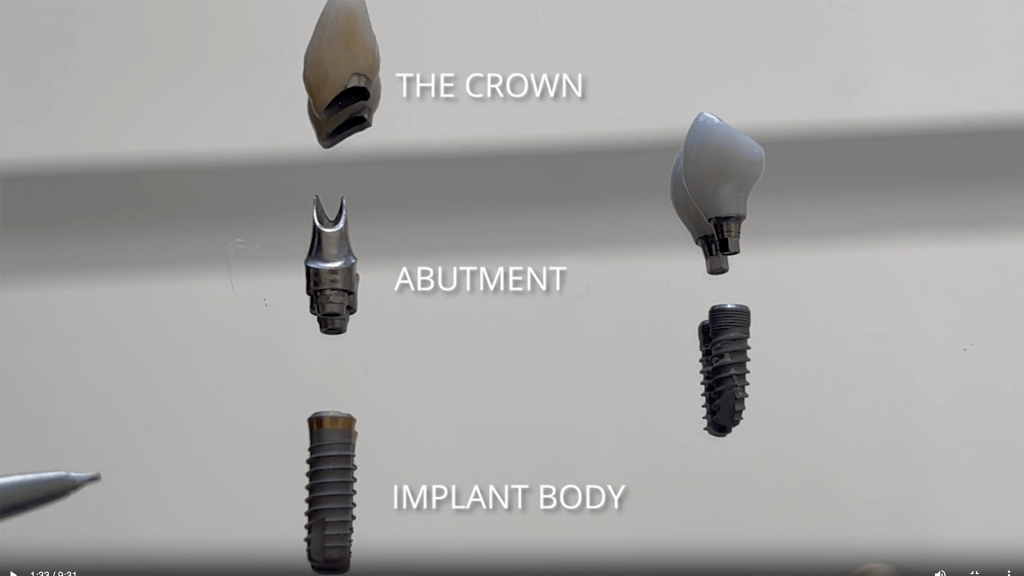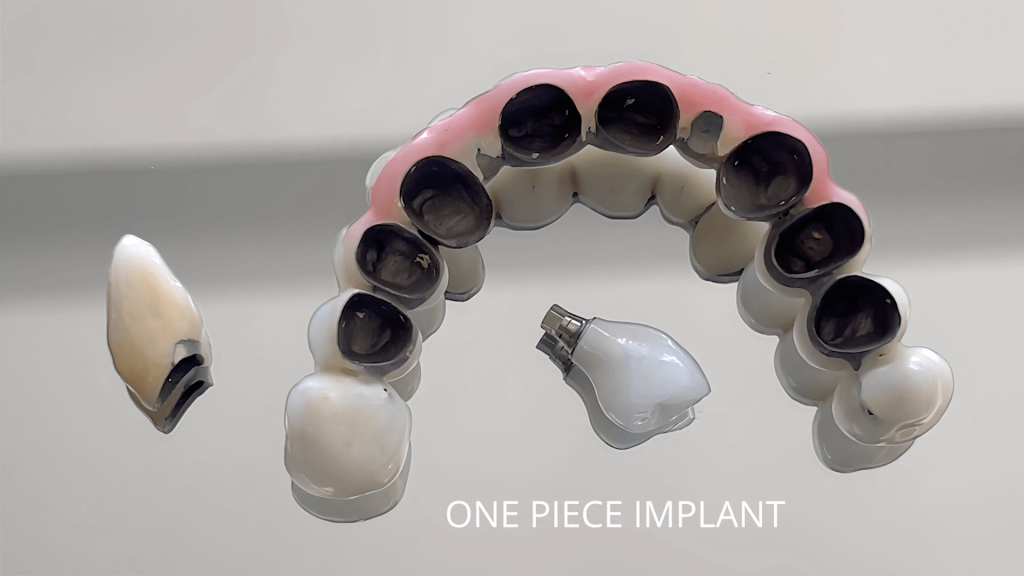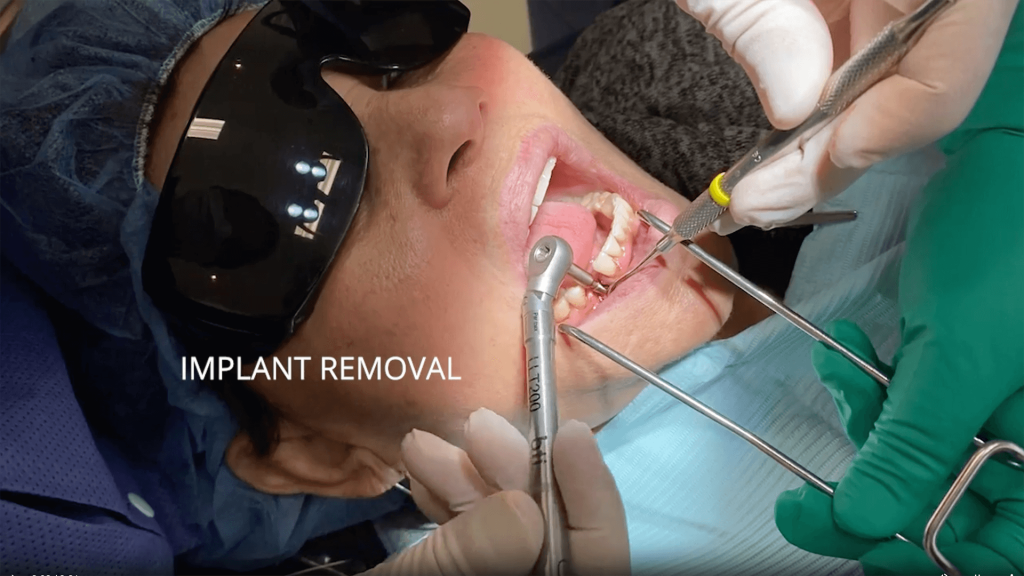Will My Dental Implant Last Forever?
How long will my dental implant last? This is a question that patients often ask their dentist. However, patients should ask what will happen to their prosthesis and dental implant reconstructions after 5, 10, and 15 years? As they say nothing lasts forever. What you discuss with your dentist should be the types of complications that can occur with simple or complex dental implant reconstruction. Let’s face it: not everything is going to stay the same with dental work, and it is important to know what can happen.
Understanding Implants
When we look at the long-term survivability of the implant, it is helpful to understand the parts of the implant restoration. Each implant restoration has three components: The implant body itself, the crown, and the abutment, which is the piece that connects the crown to the implant. Something can happen to each one of them in the long term. You can have bone loss around the implant, you can have porcelain fracture in the crown, you have an abutment failure. Things can degrade on any of the 3 elements. One way to mitigate this is a newer design, using a one-piece screw-retained crown. This eliminates the abutment element of the restoration. Then if something happened to the crown, such as a minor fracture, we can easily remove the crown, repair or replace it, and then screw it back into the implant itself. Another issue that can cause issues is when you have a very complex implant restoration – such as a full mouth implant-supported denture or a large bridge-supported by too few implants.
Potential Scenarios
As an example, imagine a restoration plan that includes four implants supporting a large one-piece bridge or denture -also known as an ‘all on four.’ If something happens to one part of this bridge, you are committed to changing the whole bridge again, which can be complex and costly. To mitigate this, you need to minimize the complexity, and you can do that by reducing the prosthetic size. The larger the prosthesis, the more chances things can happen and the more complex the repair will be. We have seen some catastrophic failures with an overloaded approach. In some case size of the prosthesis is not wells supported by just a few implants. Some of the implants will be destroyed, and the bone around them will be completely gone after 15 years in service. An instance like this requires an entirely new reconstruction.


This is why I prefer to place the implant in the thickest bone and to protect as much bone as possible. Some dentists may suggest a bone reduction surgery that requires removing your bone. But it’s important to keep in mind that you might have to go through another set of reconstructive procedures 20 years from now, and if so, there will be less bone for any implants. The most common issue in the long term is a gum or bone recession. You start with a nice bridge, but eventually, the metal starts to show when you smile. We see this progress of bone loss and gum recession happen after around 5-10 years. To repair it, you must remove the restoration and make a new one. This is a natural occurrence and will eventually happen to all large restorations. Changing or repairing a restoration can be simple but it can also be costly So it is important for this to be discussed with your dentist so that you can prepare for the costs.
Take the example of my most extended follow-ups for a patient, I delivered this case in 2000, and it’s 2024. So, I’m looking at 24 years of follow-up. The implants are solid, but the material that we build the prosthesis from, which is acrylic, tends to wear down faster than porcelain. So, this is the second time we changed the acrylic, but we didn’t have to change the implants or any of the metal frameworks. When you get acrylic teeth on your implant, you have to know that at one point, you will change those acrylic teeth with time because they will wear down.
As I noted before if something happens to one piece of your larger restoration- like the all on four, you have to replace the whole thing. Our new thinking is to try to break the larger restoration down into multiple pieces. This way if something to one part, you don’t have to change the whole bridge. We can segment the final bridges into multiple components, and if something happens to one it’s not a catastrophic failure. It’s two units that can be changed very quickly. Another common problem we see in the long term is gaps between the teeth where there is an implant. Remember, implants will not move, but your teeth will. So, after five or ten years, teeth will start shifting around, and the implants will stay in the same place, and you may see gaps. This is a normal occurrence that will happen over time.


If you design the implant crown correctly, you can unscrew it, add some composite or porcelain to account for the gaps and put it back in without replacing the entire crown. Focusing on a good treatment plan means beginning with the proper angulation and implants so that the problem of gaps can be minimized. Unfortunately, some dentists fail to do this. As you in the instance below, we have an implant placed in a young patient. Remember, implants will not move; teeth will. So, with time, teeth will shift and grow downward, and the implant will stay. Eventually, you’ll see a different level in the implant and, therefore, the implant crown. It’s important to be prepared for these changes if you get an implant placed at a very young age: you might have to remake your crown again to minimize gaps.
The most difficult of bad outcomes is if the implant itself is fractured and separated, or a whole segment will come out. This is a catastrophic failure because the entire implant must be removed, and you must start the process again with a new surgery and prosthesis to replace the failed one.
Conclusion
There are several factors that can be helpful in maintain your prosthesis for the long term. Ensure that the provider is using components made by a reputable implant manufacturer known for its strength and durability, and using the right-sized implants in the correct location, being mindful that you may need to repeat this process. It’s essential to discuss all these different things with your dentist.
Also remember everything looks different after 15 and 20 years, and things can happen. Minimizing complications and discussing the long-term with your dentist is essential. If you have any questions, please feel free to contact the office and request a complimentary examination.
Please call Obeid Dental at (301) 652-9505 if you have any questions or to schedule an appointment. We serve the Chevy Chase, Bethesda, Silver Spring, Rockville, Potomac, MD, and Washington D.C. areas.
Suggested post: Everything you need to know about dental implants
Check out our YouTube channel to watch more videos.



